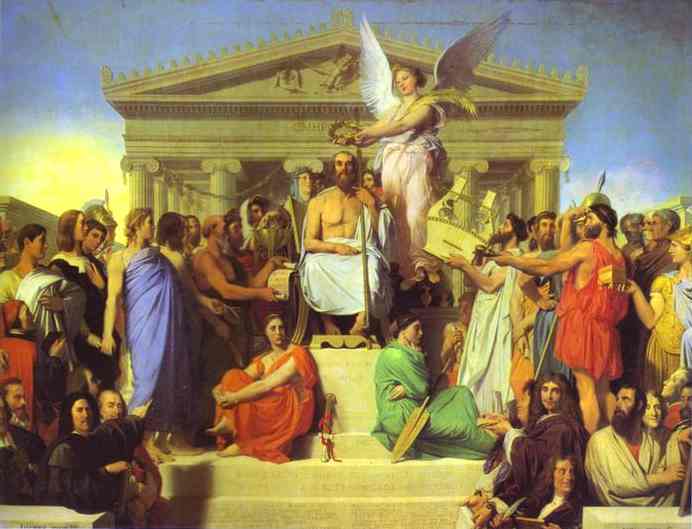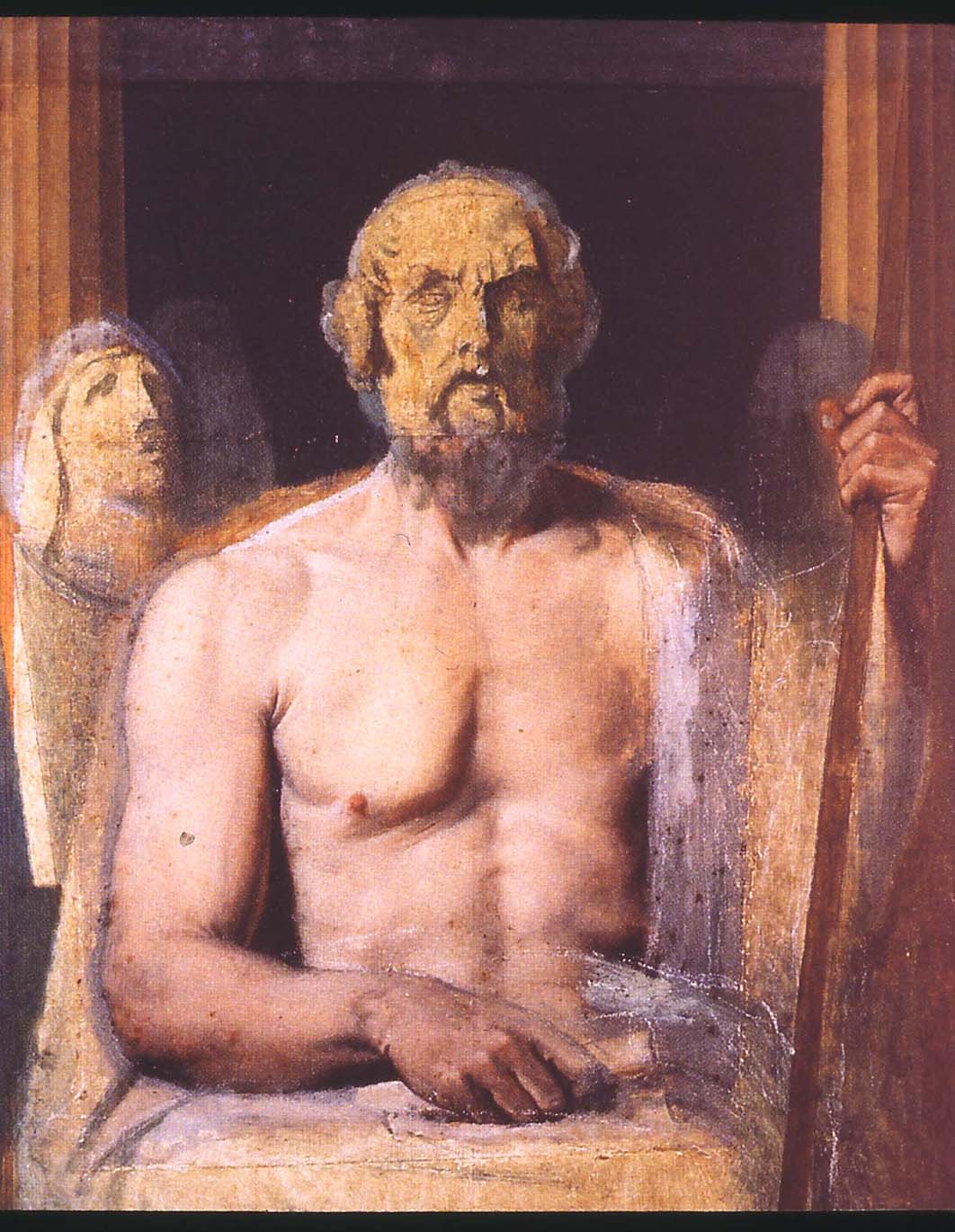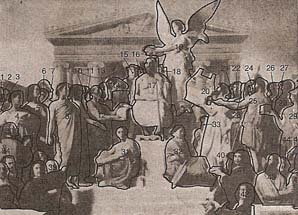
APOTHEOSIS OF HOMER By Ingres

Ingres’ Apotheosis of Homer “is the first painting that offers a literal elaboration of how the classical tradition was constituted” (Siegfried, 2005).1 All of the great artists of history, including those who came after Homer’s time, surround Homer in his coronation and come baring gifts. “Ingres solved the problem of embodying greatness or ‘unreachability’ by constituting the poet as an effect, or rather, as the effects produced by his work” (Siegfried, 2005). I feel the impact of the painting, is to show that all of the greats from history, from other poets, to playwrights, and composers have Homer to thank for their inspiration and that is why they are honoring him by bringing gifts. “Ingres represented Homer as a dead weight at the center of his painting, at once the least embodied and the most embodied of any of the figures. He is the only one seated and facing front, pale and blind, compared with the play of colors, gestures, and glances that animates the surrounding company” (Siegfried, 2005). Even though the painting is centered around the epic master, he seems alone—a dead weight in the center of the painting, who appears pale and blind, while the rest of the painting seems alive with colors and gestures. Homer is shown with his two works, embodied in the people sitting at his feet. His poems, both portrayed as women, are the only women in the painting except for the angel giving Homer his crown, almost seem mad at one another. The Iliad, which is shown with a sword, is pouting, while the Odyssey, shown with an oar, has her head turned the other direction and appears to be angry because her right hand is propped up against face and her left arm is crossed across her body in defiance.
If one looks closely at Homer and studies his figure, one can see that “Homer is the only ancient accorded a little eruption of illusionism, in the form of the foot that sticks out in the middle of the composition, one of the painting’s rare passages of projection into space”. Also notice the contrasting colors that are present in the painting. Significant figures, such as Virgil, Raphael, Herodotus, Pindar, Longinus, and of course Homer are adorned in white. (Siegfried, 2005)
The title of the painting, The Apotheosis of Homer, puts the objectification of Homer into perspective. The meaning of the word apotheosis “is exaltation to divine rank or stature” (http://dictionary.reference.com/search?r=10&q=apotheosis). The arrangement of Homer on a pedestal being crowned like a king for his ‘greatness’ and being lavished with gifts, “resembles the format of an altarpiece, with its godhead and descending tiers of the elect. Ingres made the analogy explicit through the Greek inscriptions in his painting: the lintel of the temple above Homer is inscribed, “To Homer God,” while the text chiseled into the step below the Iliad and the Odyssey reads, “If Homer is a god, that one honors him among gods; if he is not a god, that he be regarded as one” (Siegfried, 2005). Through all these means Ingres accomplishes the idea that Homer is a god.
_________________________
1 This citation, and all preceding citations, were taken from University of Michigan, Ann Arbor, Art History Professor Susan L. Siegfried's paper entitled, "The Self-Production of the Artist: Ingres's Apotheosis of Homer." This paper will be published (in a French translation) in the catalogue of the Ingres exhibition, Musee du Louvre, Paris, which will open February 2006.
![]()

Ingres, Apoth_ of Homer, Homer and Orph_ 1864-5, later repl_, Mantauban, Musee.
The above painting is a study Ingres painted in preparation for the Apotheosis of Homer. The painting was not completed, which accounts for the ghost-like appearance of Homer's face. It is difficult to see the transparency of Homer's face from this digitalized version; however, if one were to view the original work, it would be appear that his presence is eerie. This transparency of Homer can be interpreted as symbolic of his potential non-existence. The figure standing behind Homer is his predecessor, Orpheus. He also stands behind Homer in the completed work, The Apotheosis of Homer.
![]()

This critique of the Apotheosis of Homer, will examine the other figures surrounding Homer, and try to explain the importance of their presence.
This an additional link that shows the Apotheosis of Homer with numbers, except figure 45 and 46 are not known.
http://images.google.com/imgres?imgurl=http://www.mlahanas.de/Greeks/Homer/ApotheosisIngresN.jpg&imgrefurl=http://www.mlahanas.de/Greeks/Live/Writer/Homer.htm&h=500&w=654&sz=56&tbnid=q64P0KFTcH8J:&tbnh=103&tbnw=135&start=8&prev=/images%3Fq%3DApotheosis%2Bof%2BHomer%2B%26hl%3Den%26lr%3Dlang_en